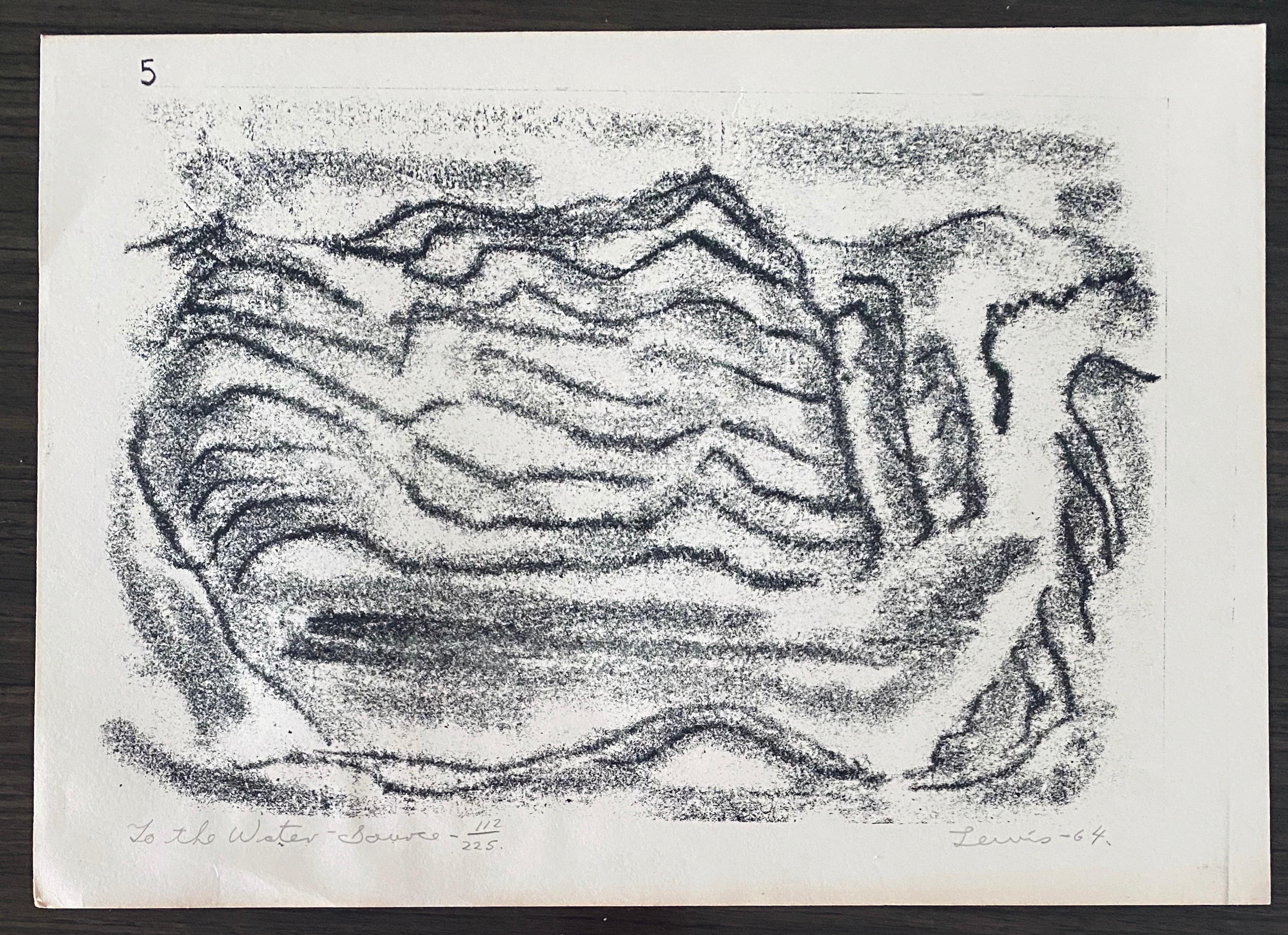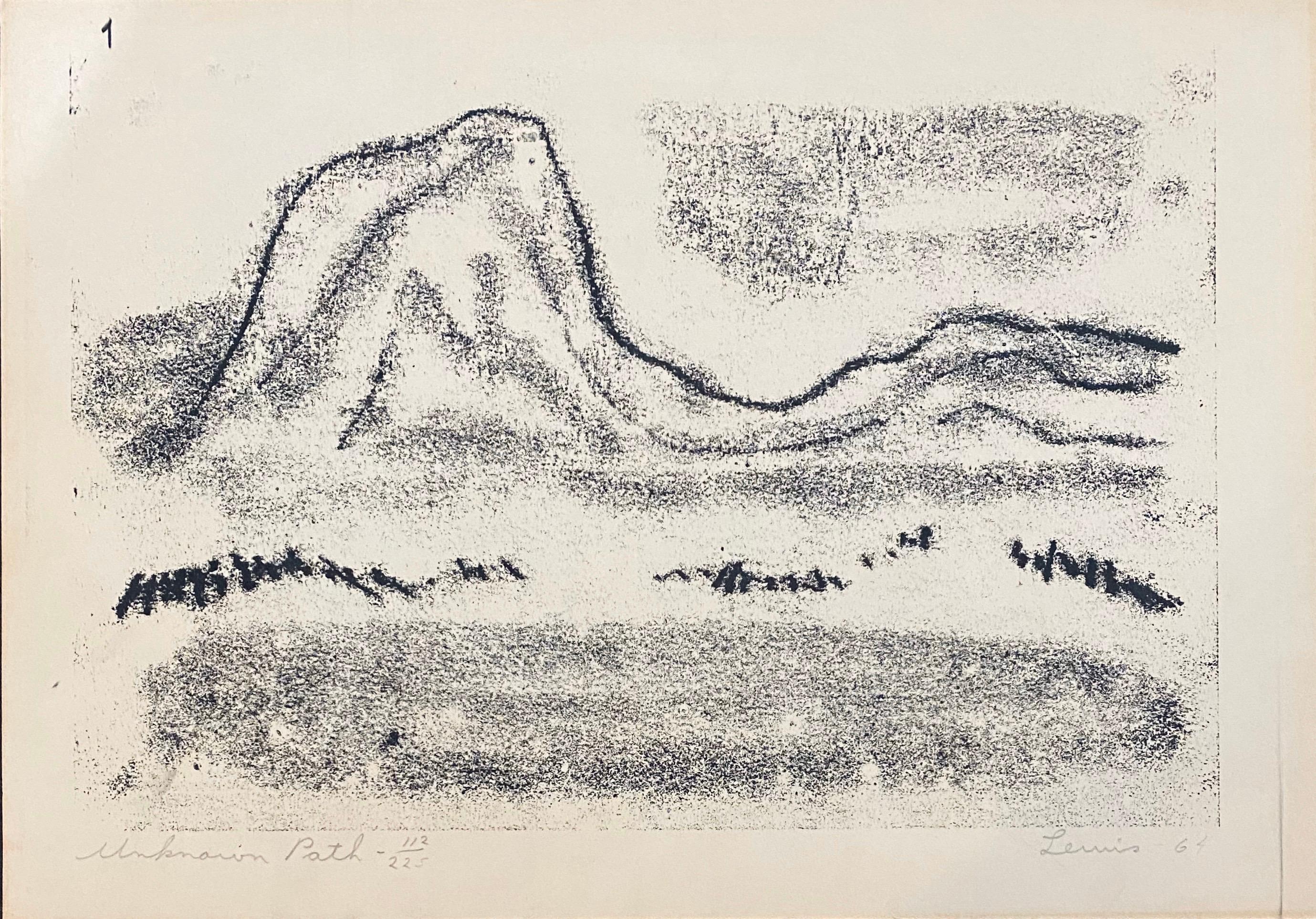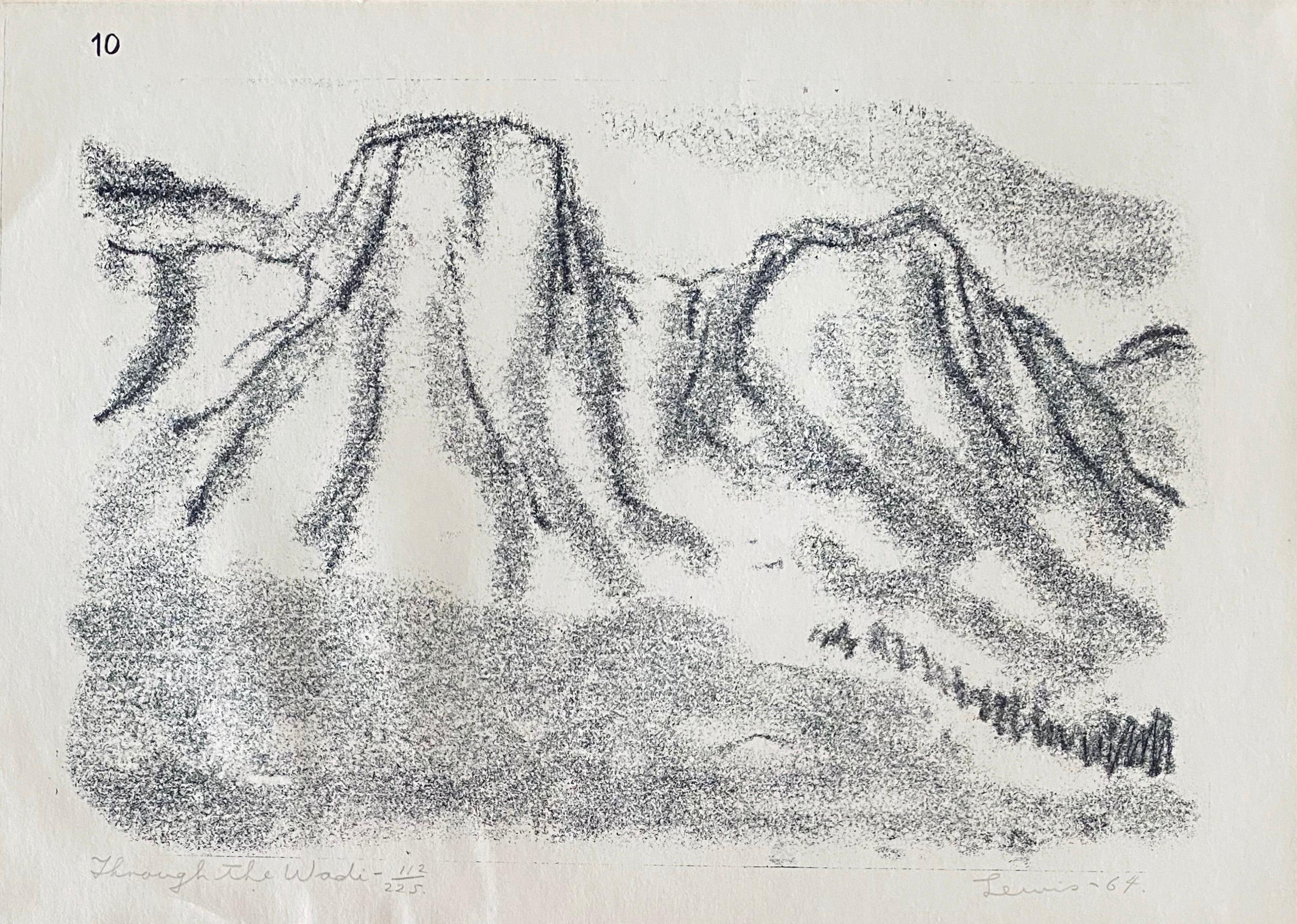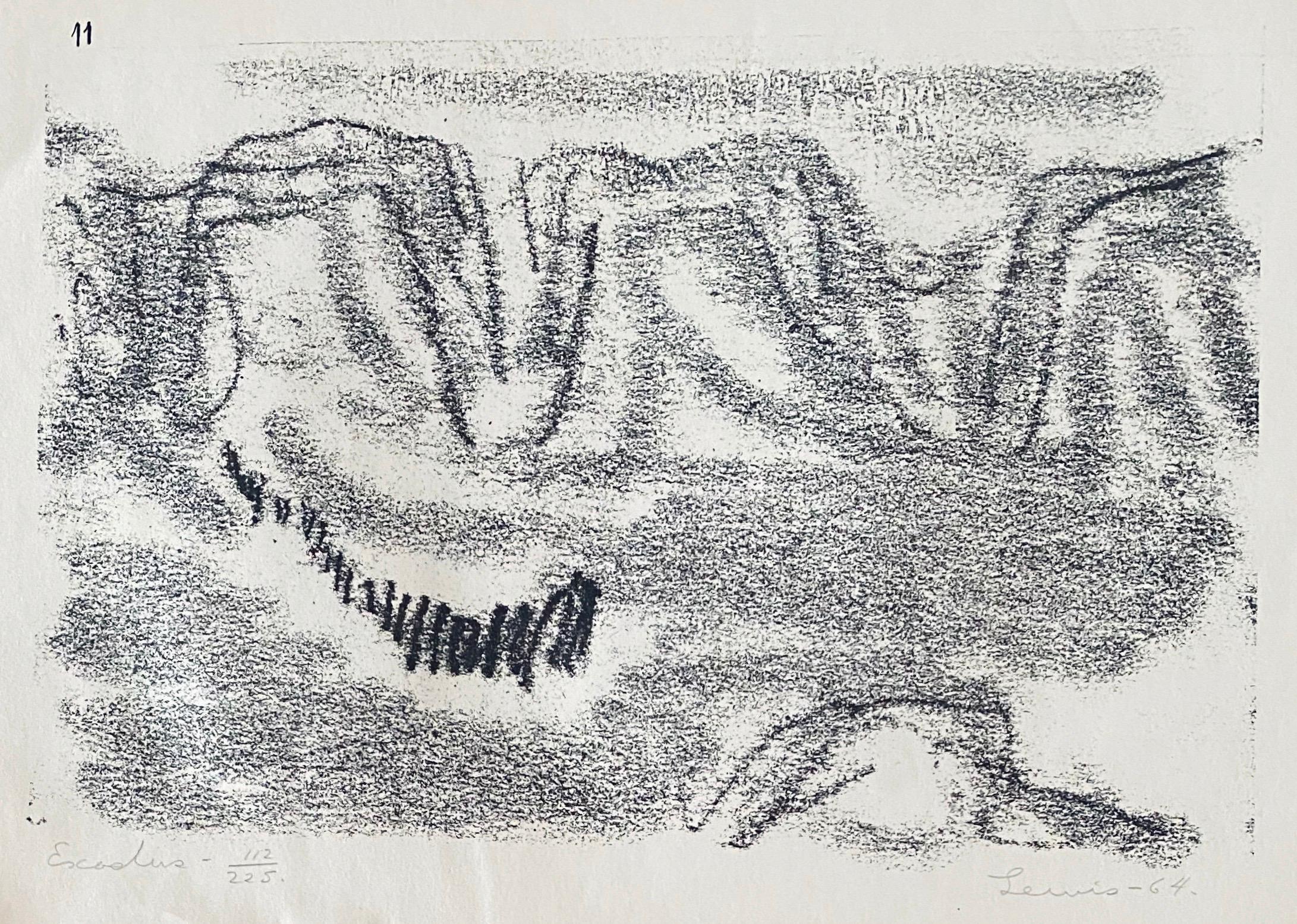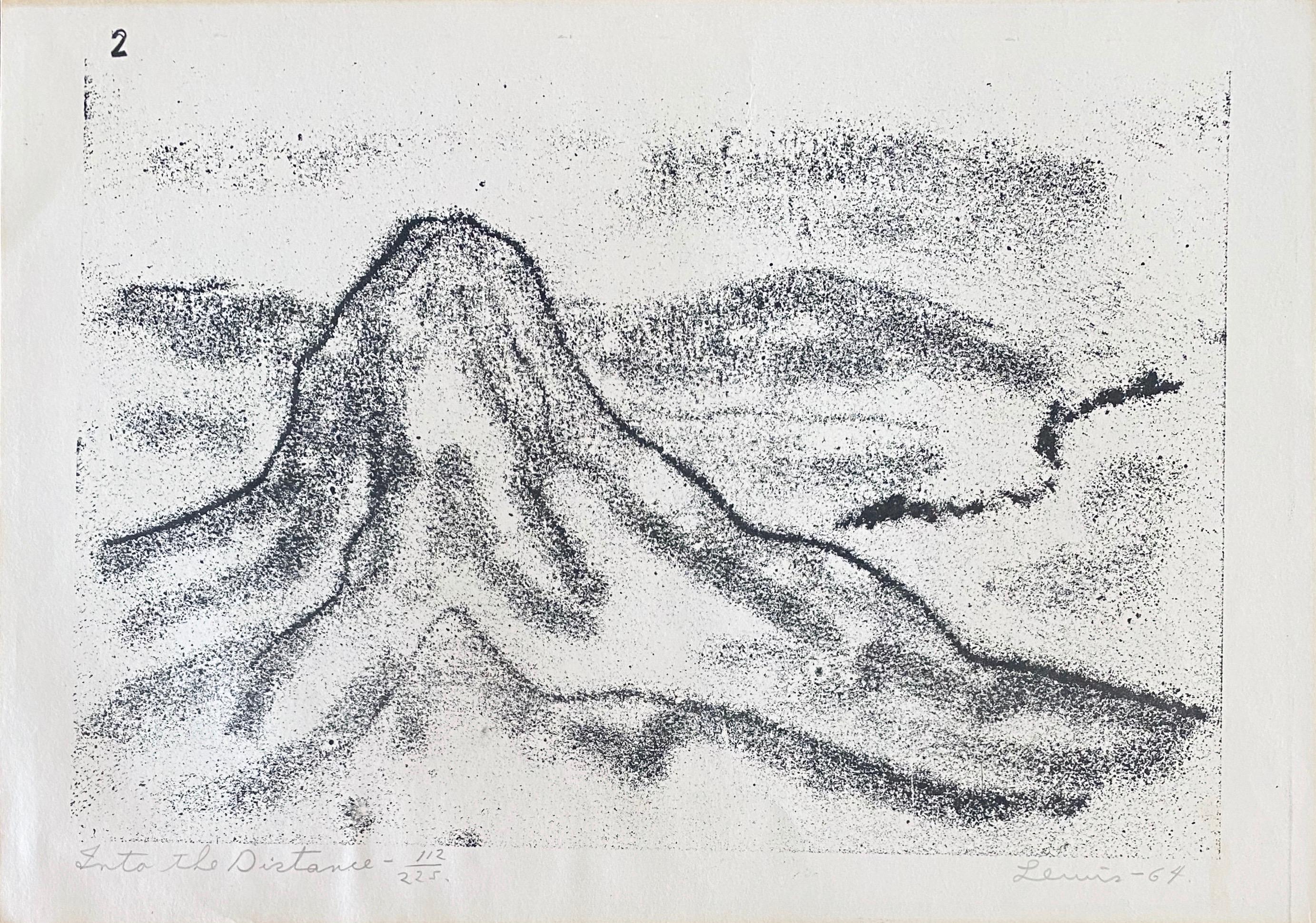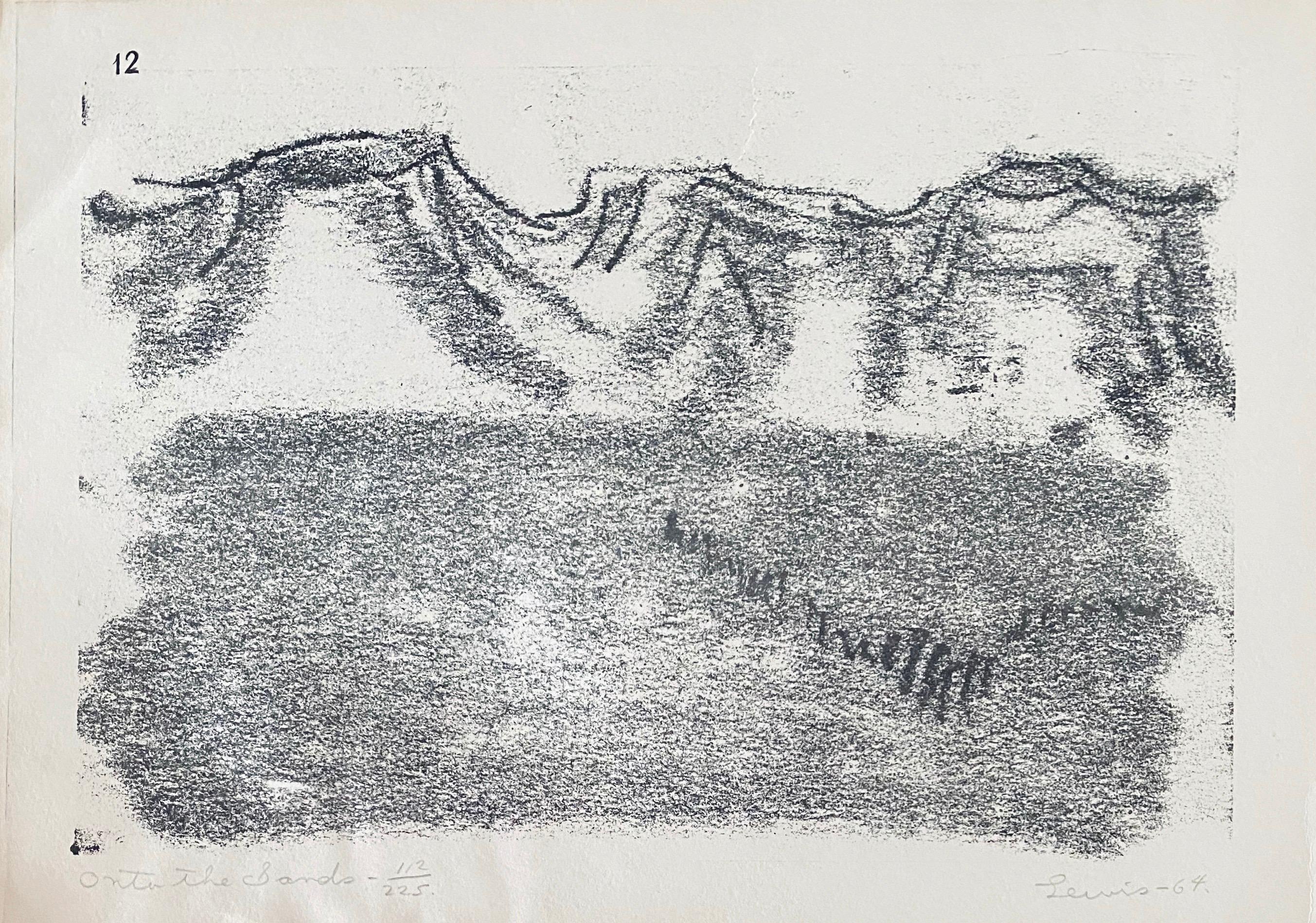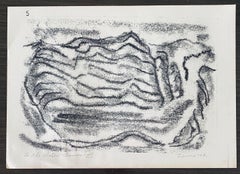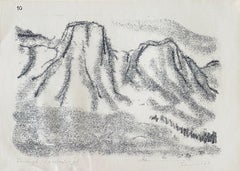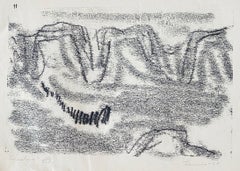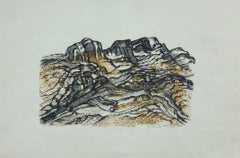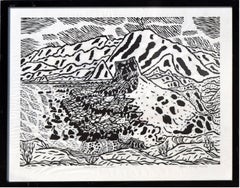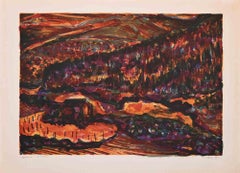Items Similar to "The Mountain Pass" from Wanderers Illustrations 112/225
Want more images or videos?
Request additional images or videos from the seller
1 of 9
Stanley Lewis"The Mountain Pass" from Wanderers Illustrations 112/2251964
1964
$350
£271.22
€307.78
CA$501.64
A$550.90
CHF 283.58
MX$6,591.68
NOK 3,610.63
SEK 3,383.69
DKK 2,298.61
About the Item
Stanley Lewis was a Jewish Canadian sculptor, photographer and an internationally renowned art teacher born on March 28, 1930 in Montreal. His works are held in many public collections such as the Montreal Museum of Fine Arts, the Musée national des beaux-arts du Québec[1], and the National Gallery of Canada, as well as in numerous private collections.[2] Since the 1950, Lewis' sculptures and lithographic works have been displayed in the galleries and museums around the world in cities such as Paris, Florence, New York City, and Mexico City.
Lewis died on August 14, 2006 at the Montreal Jewish General Hospital due to a heart failure.
He is survived by his sister, Sheila Lewis Kanter, and his daughter, Alyssa (Reid) Savage.
Stanley Lewis received his formal training through the art school at the Montreal museum of fine arts by artists such as Arthur Lismer, a member of the Group of Seven, and Jacques de Tonnancour. Graduating first in his class, he continued in his studies at the l'Instituto Allende de San Miguel, in Mexico at the workshop of the Master Florentine marble sculptor V. Gambacciani and at the Ein Hod Artist's Colony in Israel. During his travels in Florence, Lewis met Irving Stone who was in turn significantly influenced by Lewis' work, stating "Lewis taught me how to make a chisel fly across marble, and why a sculptor, to be great, has to be a poet as well." In fact, Stone's interest in Lewis' sculpting and research work on the sculptor Michelangelo led to their collaboration on the novel The Agony and the Ecstasy, one of Stone's most well known works.
Lewis was a pioneer in colour lithography in Canada, using different lithographic stones for each transparent ink color to give a gradual transitional effect in the print. He was also interested in art of the Italian Renaissance and Inuit sculpture, spending several winters in the Canadian arctic to perfect his artistic skills.
Lewis was in charge of the Department of Sculpture at the Saidye Bronfman Centre School of the Fine Arts in Montreal. He also taught fine arts at the Museum of Quebec as well as McGill University. Starting in the 1960s, Stanley Lewis was a founding member of the Quebec Sculptors Association (l'Association des sculpteurs du Québec), renamed the Conseil de la Sculpture du Québec in 1978, which organized annual exhibitions or "Confrontations" to showcase area sculptors such as Mario Merola and Hannah Franklin.
Lewis is perhaps most broadly known for his work with Irving Stone during the latter's research for this novel, The Agony and the Ecstasy. In the late 1950s, he travelled with Stone to Italy, reproducing the sculptural tools and techniques Michelangelo used to help the novelist with his work of biographical fiction.
Even though he was an avid world traveller, Lewis always returned to Montreal to his studio above Berson Monuments, a gravestone carving company on Saint-Laurent Boulevard, which he said was "a constant reminder that we are mortal souls but our creations are timeless." The studio was considered an important hub and meeting place for artists and up until his death Lewis was an important figure and cornerstone to the Montreal art and Jewish community.
Lewis was also a regular customer of the Main Deli Steak House and Schwartz's, which are both located next to his studio.
After the 1989 massacre at the Montreal Polytechnic, Lewis donated one of his sculpture as a memorial to the victims.
After his death, two sculptors, including Quebec sculptor Eugène Jankowski, founded the Stanly-Lewis Academie in Montreal (l'Académie Stanley-Lewis à Montréal) in 2007.
- Creator:Stanley Lewis (1941, American)
- Creation Year:1964
- Dimensions:Height: 9.8 in (24.9 cm)Width: 13.8 in (35.06 cm)
- Medium:
- Period:
- Condition:Some minor toning. Please see photos.
- Gallery Location:Surfside, FL
- Reference Number:1stDibs: LU38215099042
About the Seller
4.9
Platinum Seller
Premium sellers with a 4.7+ rating and 24-hour response times
Established in 1995
1stDibs seller since 2014
1,833 sales on 1stDibs
Typical response time: 1 hour
- ShippingRetrieving quote...Shipping from: Surfside, FL
- Return Policy
More From This Seller
View All"To The Water Source" from Wanderers Illustrations 112/225
By Stanley Lewis
Located in Surfside, FL
Stanley Lewis was a Jewish Canadian sculptor, photographer and an internationally renowned art teacher born on March 28, 1930 in Montreal. His works are held in many public collectio...
Category
1960s Abstract Prints
Materials
Ink, Black and White, Lithograph
"Unknown Path" from Wanderers Illustrations
By Stanley Lewis
Located in Surfside, FL
Stanley Lewis was a Jewish Canadian sculptor, photographer and an internationally renowned art teacher born on March 28, 1930 in Montreal. His works are held in many public collectio...
Category
1960s Abstract Prints
Materials
Paper, Ink, Lithograph
"Through The Wadi" from Wanderers Illustrations 112/225
By Stanley Lewis
Located in Surfside, FL
Stanley Lewis was a Jewish Canadian sculptor, photographer and an internationally renowned art teacher born on March 28, 1930 in Montreal. His works are held in many public collectio...
Category
1960s Abstract Prints
Materials
Ink, Black and White, Lithograph
"Exodus" from Wanderers Illustrations 112/225
By Stanley Lewis
Located in Surfside, FL
Stanley Lewis was a Jewish Canadian sculptor, photographer and an internationally renowned art teacher born on March 28, 1930 in Montreal. His works are held in many public collectio...
Category
1960s Abstract Prints
Materials
Ink, Black and White, Lithograph
"Into the Distance" from Wanderers Illustrations 112/225
By Stanley Lewis
Located in Surfside, FL
Stanley Lewis was a Jewish Canadian sculptor, photographer and an internationally renowned art teacher born on March 28, 1930 in Montreal. His works are held in many public collectio...
Category
1960s Abstract Prints
Materials
Ink, Black and White, Lithograph
"Onto The Sands" from Wanderers Illustrations 112/225
By Stanley Lewis
Located in Surfside, FL
Stanley Lewis was a Jewish Canadian sculptor, photographer and an internationally renowned art teacher born on March 28, 1930 in Montreal. His works are held in many public collectio...
Category
1960s Abstract Prints
Materials
Ink, Black and White, Lithograph
You May Also Like
Mountain
Located in Genève, GE
Work on paper
Category
1970s Landscape Drawings and Watercolors
Materials
Watercolor, Gouache
Mountainous Landscape
Located in Douglas, Isle of Man
Raymond James Coxon 1896-1997, was an English landscape and portrait painter, he was a war artist during the second World war after which his works became more abstract. He studied a...
Category
Mid-20th Century Landscape Drawings and Watercolors
Materials
Paper, Watercolor
Mid Century Abstracted Landscape -- South from Puertecitos
By Edgar Dorsey Taylor
Located in Soquel, CA
A striking woodcut landscape print from Edgar Dorsey Taylor's series of prints depicting his adventures in Baja California in 1963 (American, 1904-1978). Also, the book titled "Baja ...
Category
1960s Abstract Impressionist Landscape Prints
Materials
Archival Paper, Woodcut
Landscape - Lithograph attr. to Claude Clero - Mid-20th century
Located in Roma, IT
Landscape is an original lithograph realized by Claude Clero (attributed).
Good condition.
Proof artist, hand signed with pencil by the artist.
Category
20th Century Contemporary Abstract Prints
Materials
Lithograph
Mountainous Landscape, Mexico
Located in Fairlawn, OH
Mountainous Landscape, Mexico
Monotype in colors on heavy paper, c. 1960's
Signed in ink lower left "G Ceniceros"
Condition: Excellent
Image size: 6 x 14 1/2" (15.24 x 36.83cm)
Sheet size: 12 7/8 x 19 11/16 inches
Guillermo Ceniceros (born May 7, 1939) is a Mexican painter and muralist, best known for his mural work in Mexico City, as well as his figurative easel work. He began his mural painting career as an assistant to mural painters such as Federico Cantú, Luis Covarrubias and then David Alfaro Siqueiros who was a mentor and a key influence. Ceniceros is the most notable of Siqueiros' assistants. While he has experimented with abstract expression, his easel work mostly classifies as figurativism and is influenced by the geometrical construct of Mexican muralism. He has had over 300 individual and collective exhibitions in Mexico and the International stage. His work has been recognized by the Mexican Ministry of Culture and several of its institutions. He has painted over 20 large scale Mural Paintings with some of the most notable being the large scale work for the Legislative Palace of San Lazaro (Mexico's Legislative Building) as well as his murals in the Metro Subway System. He is a member of the Salón de la Plástica Mexicana. In 1995, the State of Durango, Ceniceros' native state, opened to the public the Guillermo Ceniceros Art Museum within the oversight of the Ministry of Culture. Ceniceros has been reviewed by notable critics such as Berta Taracena, Raquel Tibol, Alaide Foppa, Graciela Kartofel, José Angel Leyva and Eduardo Blackaller among others. There are several publications about his work including a vast review of his art life endeavors developed by the Ministries of Culture of Durango and Nuevo León. He is married to the artist Esther González and lives in his studio house in the Colonia Roma of Mexico City.
Life
Interview with the subject Ceniceros and Siqueiros
Ceniceros was born in a small village called El Salto, located in the municipality of Pueblo Nuevo in the Mexican state of Durango. His father was a woodworker who made toys and furniture in his workshop. His father's shop would become an influence in Ceniceros' life long interest in developing his own innovative working tools. When he was twelve the family moved to Monterrey to seek better economic opportunities. There he attended school and when he was fourteen he entered the Fabricación de Máquinas, S.A. (FAMA), a school/business, where he studied industrial drawing. He considers this early training important as it taught him the importance of geometry, use of space and materials. While at FAMA he met painters Gerardo Cantú and Ignacio Ortiz, and collaborated with them on sketches for publications of Alfonso Reyes, Pedro Garfias and other notable writers.
In 1955, he enrolled in the Taller de Artes Plásticas at the Universidad Autónoma de Nuevo León, graduating in 1958. At the Taller he met fellow Mexican artist Esther González, whom he married and with whom he has two children.
In 1962 he moved to Mexico City with the goal of working in the Taller of the Maestro David Alfaro Siqueiros. He became Siqueiros' first assistant working on his last murals while at the same time working at night on his easel painting work. Siqueiros supported Ceniceros decision to leave his Taller and supported him in his career until his death in 1974. By then Ceniceros was already a break thru artist having had several individual exhibitions including the prestigious Palacio De Bellas Artes as well as other recognitions. Thru the 70's and 80s Ceniceros continued his work with an emphasis on exhibits and exchanges abroad and traveling to Eastern Europe, Cuba, China, Chile, Ecuador, Italy and the United States. His Mexico City contemporaries and circle would include names that today have become reference such as Sebastian, José Luis Cuevas, Gilberto Aceves Navarro, Benjamin Dominguez, Gustavo Arias Murueta, Byron Galvez, Leonel Maciel among others. In the 70's his Row-House neighbors in the colonia Roma were Francisco Toledo and Alejandro Jodorowski.
His focus on mural painting is renewed in the mid 80's thru his large scale work in the Metro Subway System with him working on major commissions consistently and into the new century. While the Mexican school of Muralism had been challenged by the Ruptura members, the interest in Mural painting as a unique national form of expression continues.
He lives in Mexico City at a studio/home in the Colonia Roma. His home is a frequent gathering place for writers, poets, painters, singers, actors and journalists. He has a strong interest in Spanish language literature. Juan Rulfo...
Category
1960s Modern Landscape Drawings and Watercolors
Materials
Monotype
MOUNTAINSCAPE #4
By Linda Jacobson
Located in Palm Desert, CA
The Mountainscape series has been inspired by Jacobsons stay in the Alpes-Maritime in a small medieval village, Fanghetto, on the Italian/French border. The colors are soft, flowing and ethereal, creating a feeling of harmony, and a sanctuary for healing. Jacobson creates her paintings with many layers of acrylic paint on canvas, giving her work a luminous and translucent quality. The pastel colors and flowing compositional elements express the spiritual essence of nature. Mountainscape #4 is a mixed-media painting of oil paint over acrylic washes on gallery wrapped linen canvas. Linda Jacobson's paintings are lyrical abstractions inspired by her love of landscape and its elements: form, movement, light, and what she perceives to be its essence an energy or quality that goes beyond visual appearance. Born in Los Angeles, she received her BFA from California State College, Northridge, and graduated Summa cum Laude from the prestigious Art Center College of Design where she was mentored by pioneer California modernist Lorser Feitelson. Her work has been featured in solo and group exhibitions in galleries and museums throughout the United States and abroad, including MRG Fine Art, in Los Angeles; Gallerie Rohling, Berlin, Germany; California State University Channel Islands in Ventura; Karpeles Museum in Santa Barbara, California; BG Gallery in Santa Monica; George Lawson...
Category
21st Century and Contemporary Land Paintings
Materials
Canvas, Acrylic
$3,360 Sale Price
20% Off
